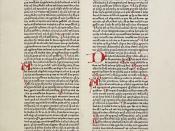Humankind has long endeavored to achieve as much understanding of its surroundings possible and this has culminated in the creation of culture, religion and belief"ÃÂthe endless array of definitions and rules, postulations and expectations that function to provide clarification of the multitude of events present in our world. There are, however, some experiences that remain resistant to clear understanding, experiences in which a human being is overwhelmed by something inexplicable that seems to comprise the universe in its entirety; a presence that seems to comprise all of reality, an experience often labeled as mystical in nature. Often mystical experience is associated with religious belief and practice and a person having such an experience within the religious context may view it as evidence supporting claims of religious doctrine and serving as proof of the presence of an ultimate divine reality. In addition, the appeal of the mystical experience is such that people actively seek it out, using religious tools such as rituals and practices aimed at focusing the mind and triggering a mystical response.
These responses, although they tend to occur within the framework of the respondent's given cultural and religious background, still have much in common that can transcend societal boundaries and as such provide the substrate through which people of all cultures and faiths may connect at what seems to be the most fundamental level of our existence.
It is difficult to adequately define any given mystical experience because our only access to them, barring a personal mystical experience, is offered by the wide variety of descriptions available from unverifiable first person accounts. These descriptions are tangled within the context of the particular cultural and religious beliefs in which they occur, and these beliefs tend to bias their interpretations and color their descriptions. Robert S. Ellwood, in his book...


